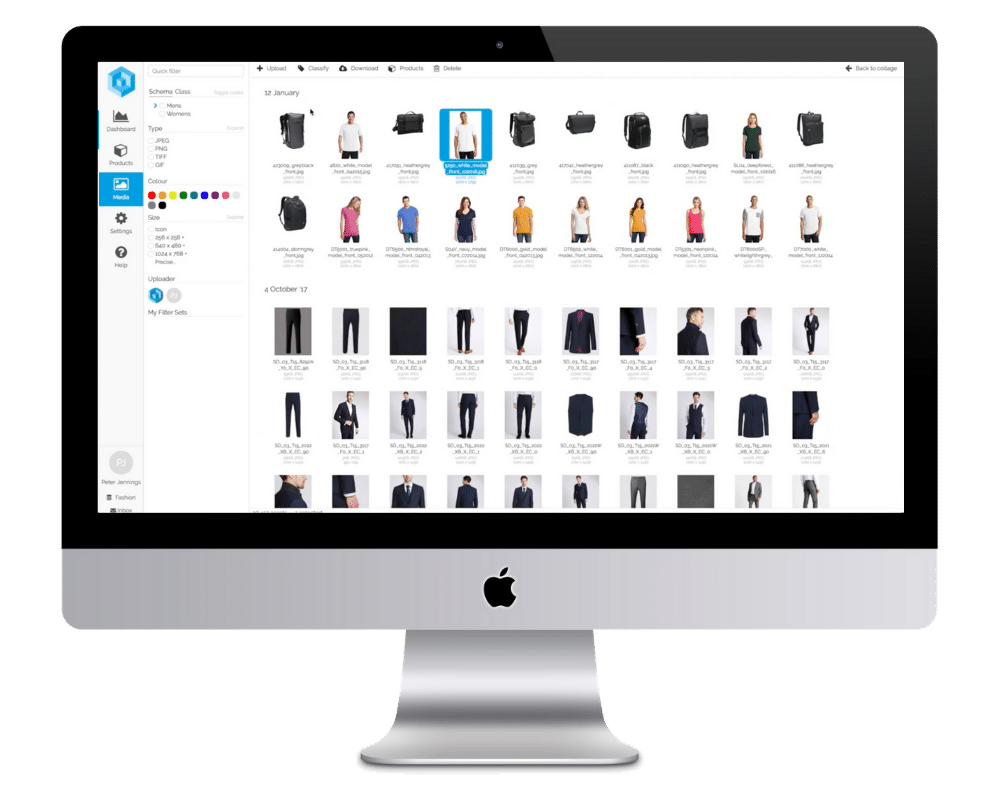Table of Contents
1. Who are GS1?
GS1 is a not-for-profit, international organization setting language standards for coding systems. These global languages make it easier for organizations to identify, capture and share information.
For example, the most recognizable of these ‘languages’ is the barcode. Barcodes and GS1 standards help improve customer experiences and increase efficiencies for businesses around the world. The GS1 assigns seven attributes to each product:
- Global Trade Item Number or GTIN
- Brand name
- Product description
- Product image URL
- Global product classification code
- Net content & unit of measure
- Country of sale
2. Why are GS1 important for retailers and manufacturers?
It’s easy to see why GTIN barcodes are scanned 6 billion times each day. After all, they account for products sold both in stores and online.
A GTIN is a series of numbers associated with a barcode. It identifies items and retrieves predefined information at the pricing, ordering, or invoicing points in your supply chain.
The GTIN is part of larger global data structures identifying unique products. In fact, GTIN codes are necessary for most online marketplaces, including:
- Amazon
- eBay
- Alibaba
- Google Shopping
- Carrefour
- Tesco
- Walmart
- Best Buy
GS1 General Specifications
GS1 standards enable businesses to identify, capture and share vital product information and improve traceability. The GS1 system standardizes the identification of goods, services, assets, locations, etc., worldwide using unique identification keys such as bar codes. The standards cover four functions:
-
Identify
Information systems can use unique GS1 identification keys to attach a clear identity to entities such as:
- Trade items
- Logistics units
- Physical locations
- Documents
- Service relationships
-
Capture
GS1 data capture standards help connect bar code and radio-frequency identification (RFID) data carriers to various business applications. To do so, they use interface standards for readers, printers, and other hardware and software components.
-
Share
GS1 data standards improve electronic communications to share master data, transactional data, and visibility event data. Additionally, communication, discovery, and trust standards are necessary for applications and trading partners to exchange data securely.
-
Use
The business must decide which standards to use to make their processes more efficient and traceable.
Overall, the GS1 system is intended for use by all industries and trade sectors. When changes are introduced, they must be done in a way that does not disrupt existing users. Consequently, changes are driven by new user-driven applications and can only be authorized if they are made to GS1 standards. GS1 members are notified of changes to ensure they remain compliant.
3. How can GS1 help when it comes to barcodes?
GS1 provides a GTIN ‘check digit calculator’ to ensure your barcodes meet their standards. In essence, you simply enter the barcode, and it will tell you if it is composed correctly. Additionally, you can find companies linked to barcodes with a reverse barcode search.
4. How can my brand be sure to meet these standards?
A PIM system helps you keep track of the data needed to make GTIN codes for products. For example, it provides:
Real-time insights on compliance
PIMs enables you to validate a long list of criteria to ensure you remain compliant with marketplaces and other standards you wish to set. Therefore, when standards are incorporated into your vetting process, your PIM flags missing information required to create GTIN codes.
Always up-to-date information
Your PIM also ensures you always have a single source of truth where product information is updated. Because GS1 standards change, those standards will apply to all of your products. So, you easily make changes and deploy them throughout your entire product catalog using a PIM.
Publishing product information
Publishing data to GS1 does not enable you to store data beyond the standardized GS1 attributes. However, a PIM system enables you to optimize your internal processes to collect, enrich, and publish product information to the relevant channels and marketplaces, supporting the unique sales processes of each.
To conclude, GS1 is a ground-breaking organization helping to standardize product identification for both consumers and businesses. This allows for efficient and transparent selling of products both domestically and internationally.












